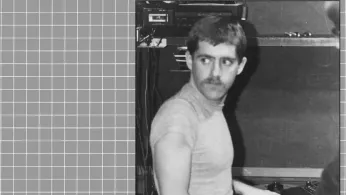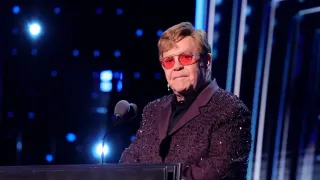
5 hours ago
Hi-NRG Icon Patrick Cowley Celebrated in Unique Pittsburgh Art Exhibit Honoring LGBTQ+ Legacy
READ TIME: 2 MIN.
Pittsburgh’s vibrant arts scene is shining a spotlight on Patrick Cowley, the revered Hi-NRG and disco innovator whose music and life left an indelible imprint on LGBTQ+ culture. The newly opened exhibit, “Electric Ecstasy: The Art and Influence of Patrick Cowley,” offers a rare glimpse into the creative mind of a figure widely credited with shaping the sound of modern dance music and empowering queer communities through art and self-expression .
Born in Buffalo, New York, in 1950, Patrick Cowley’s early years were steeped in music, first as a drummer and later as a student of English and electronic composition . At age 21, Cowley moved to San Francisco, immersing himself in the city’s burgeoning LGBTQ+ scene and quickly becoming a central figure in its underground clubs . His innovative use of synthesizers and sequencers would soon revolutionize dance music, culminating in collaborations with iconic vocalist Sylvester and the birth of the energetic, futuristic Hi-NRG sound .
Cowley’s artistry was deeply intertwined with his identity as a gay man during a time of both celebration and struggle for LGBTQ+ people. His music not only filled dance floors but also created safe spaces for queer joy and liberation in an era marked by discrimination and the looming threat of the AIDS crisis .
The Pittsburgh exhibit curates a blend of visual installations, original album artwork, and rarely seen memorabilia, offering visitors a multisensory journey through Cowley’s world. Archival audio installations provide a chance to experience the pulsating rhythms and soaring synths that defined tracks like “Megatron Man” and his collaborations with Sylvester, including the anthemic “You Make Me Feel (Mighty Real)” .
Exhibit organizer Jordan Reynolds shared, “Patrick Cowley was more than a producer—he was an architect of queer soundscapes and a beacon for LGBTQ+ artists who followed. This show is about honoring his artistry and ensuring his story reaches new generations.”
Cowley’s influence extended beyond disco into early electronic, house, and pop music, inspiring acts such as New Order, the Pet Shop Boys, and countless contemporary DJs . His pioneering sound, marked by bold synthesizer experimentation and an unapologetic embrace of queer sexuality, helped lay the groundwork for the global popularity of electronic dance music.
Tragically, Cowley’s life was cut short at age 32 due to complications from AIDS, at a time when the epidemic was devastating LGBTQ+ communities and erasing many of their brightest talents . Today, renewed appreciation for Cowley’s work—fueled by archival releases and exhibits like the one in Pittsburgh—serves as both remembrance and celebration, ensuring his legacy continues to inspire resilience, creativity, and pride.
“Patrick Cowley’s music was a lifeline for so many queer people searching for belonging,” says exhibit attendee and longtime fan Mariah Ellis. “This exhibit is more than nostalgia; it’s a living, breathing tribute to the power of music to transform lives.”
The “Electric Ecstasy” exhibit runs through August, with special programming including panel discussions on the intersection of music, art, and LGBTQ+ activism. For many, it is a long overdue recognition of an artist whose sound defined an era and whose spirit endures in every beat.






